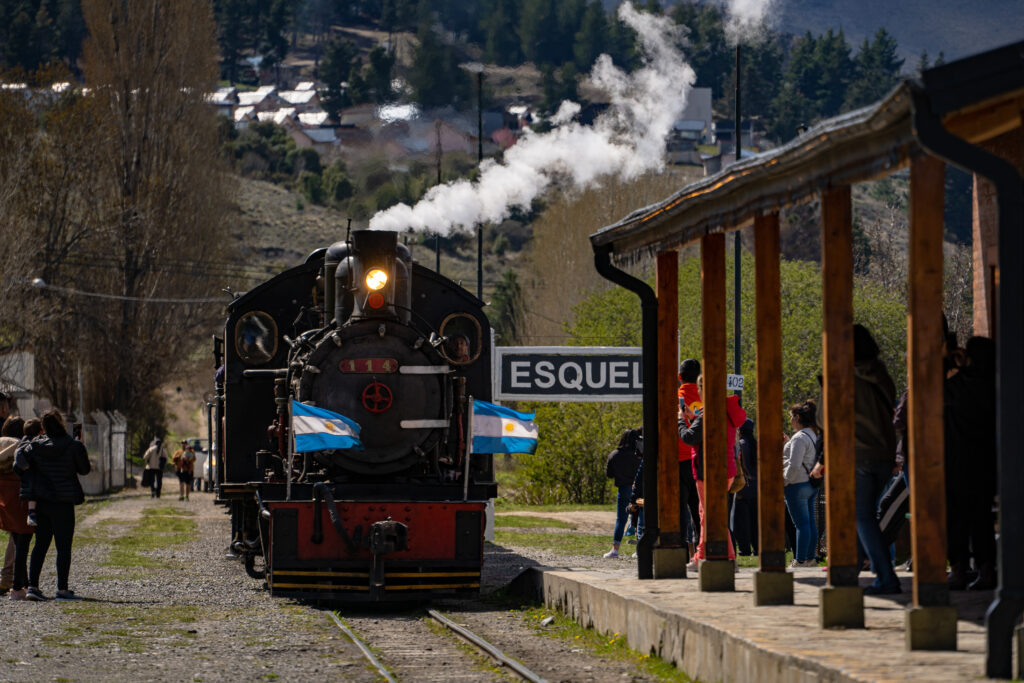
Hace casi un siglo, desde 1945, La Trochita, el Viejo Expreso Patagónico, surca la vasta estepa como un viajero eterno, reflejo vivo de la identidad del sur argentino. Este tren, venerable y querido, ha bordado con su noble porte los paisajes idílicos que enmarcan su angosta trocha de 75 centímetros, un rasgo distintivo que no ha hecho más que realzar su presencia imponente y dejar una marca indeleble en la historia de la región. Este tren no es solo una reliquia; es un contador de historias, un cronista que, con cada chirrido y bufido de vapor, revive un tiempo donde el progreso se vestía de hierro y vapor.
Desde 1945, cuando su silueta de hierro apareció por primera vez en Esquel, ha tejido un lazo entre la naturaleza y el hombre, engalanando con su presencia férrea y majestuosa las tierras patagónicas. En su juventud, las largas formaciones de vagones, cargados primero con mercancías y luego con sueños de pasajeros, fortalecieron la economía y la comunicación en la región. Hoy, lejos de perder su vitalidad, La Trochita se ha convertido en un guardián de recuerdos, un atractivo turístico que preserva intacta el alma de sus días de gloria.
Sus vagones y locomotoras originales de 1922 siguen dando cuenta de un tiempo pasado, como testigos mudos de un proyecto de país, pero también como testimonios de compromiso y superación. Declarado Monumento Histórico Nacional en 1999, La Trochita es uno de los cinco trenes de trocha angosta a vapor que aún circulan por el mundo, llevando consigo el eco de un siglo que se niega a desvanecerse.
CUANDO LA HISTORIA COBRA VIDA
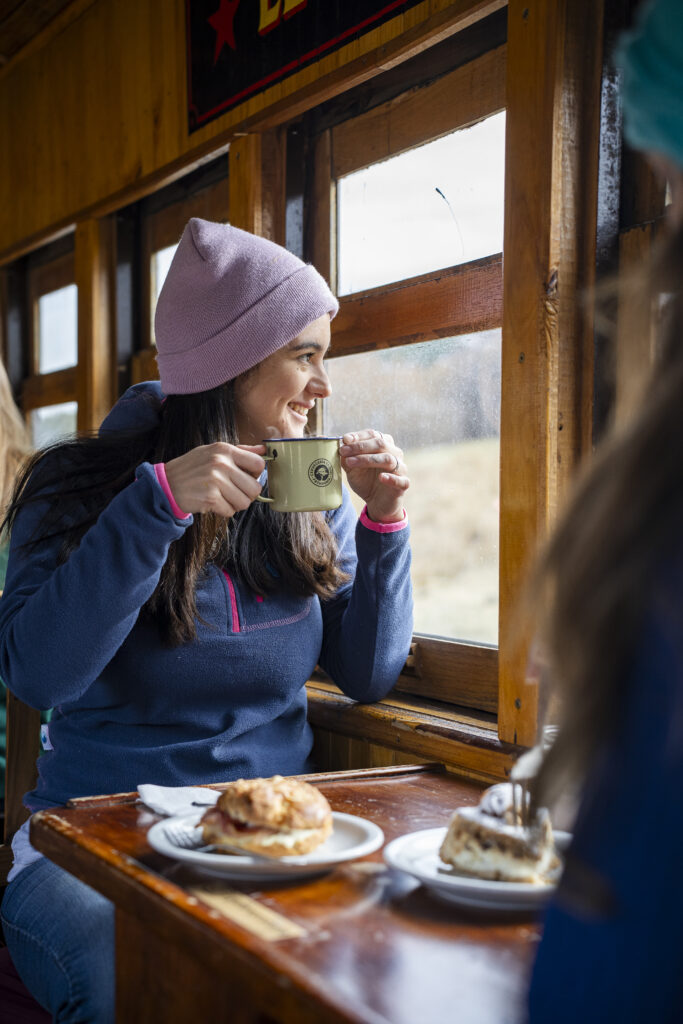
La estación ferroviaria de Esquel se erige como un portal, un umbral que separa el presente del pasado. Al atravesar el paseo ferroviario, el visitante inicia un viaje pausado en el tiempo, donde cada paso lo adentra en una era lejana. En medio de la tecnología y las comodidades modernas, los antiguos faroles, el mobiliario de antaño, y los archivos periodísticos y fotográficos evocan los primeros años del siglo pasado. Cada objeto es un ancla que arraiga al visitante en un pasado palpable, invitándolo a ser no solo un espectador, sino un protagonista activo de esta travesía multisensorial.
Al abordar el centenario vagón de madera, de origen belga, se ocupa un asiento en los bancos también de madera que, sin lujos, ofrecen autenticidad. No hay altavoces ni pantallas digitales, solo el sonido de las campanadas que el guarda hace resonar desde el andén, señalando el inicio del viaje. Una densa nube de vapor se alza desde la legendaria locomotora, impregnando el aire con su esencia, mientras el silbido del tren se entrelaza con el repiqueteo rítmico sobre los rieles y durmientes de la trocha angosta, abriendo la puerta a una experiencia cargada de magia.
El guarda se acerca para marcar los boletos, su presencia evoca el ritual de otro tiempo. En el centro del vagón, una salamandra sigue cumpliendo su labor, calentando el ambiente en las épocas de frío y llenando el aire con el característico aroma de la madera al contacto con el fuego. A un lado, la ventana actúa como un puente entre el interior y el exterior, un matrimonio perfecto entre la profundidad de la naturaleza y la majestuosidad del tren, que avanza con calma pero con firmeza hacia la estación de Nahuel Pan.
Durante el trayecto, quienes están a bordo pueden recorrer y explorar la formación, cruzando de vagón en vagón a través de puertas que rechinan con el paso del tiempo. Mientras el tren se mece al ritmo de la trocha angosta, los sonidos del viaje se entrelazan: murmullos en distintos idiomas, mezclados con las conversaciones de turistas nacionales, crean un mosaico multicultural que refleja la diversidad de quienes vienen a experimentar este monumento nacional. Al llegar al comedor, el visitante se acomoda en una de las mesas mientras el paisaje natural se despliega ante sus ojos como un desfile de postales paradisíacas. Saborear un chocolate caliente acompañado de un roll de canela, y en una de las más de 40 curvas del recorrido, se vislumbra la locomotora desafiando el viento, atravesando la nube de vapor, ofreciendo una imagen digna de una película que busca en el horizonte encontrar las sombras de los bandoleros Butch Cassidy y Sundance Kid.
Luego de una hora de la partida, el tren llega a su destino: la estación de Nahuel Pan. El tiempo de espera, unos 45 minutos, permite acondicionar la formación para el regreso a Esquel, y brinda la oportunidad de sumergirse aún más en el pasado ferroviario, visitando el museo que expone la cultura mapuche-tehuelche antes de emprender el viaje de vuelta.
El circuito actual es una versión condensada de un recorrido que en su totalidad abarcaba más de 400 kilómetros, atravesando puentes, túneles y más de 600 curvas. Es una muestra viva de la ingeniería y tecnología del siglo pasado, donde la geografía se moldeaba a fuerza de ingenio y los recursos naturales se aprovechaban al máximo. Desde la ventana, al observar los rieles, es imposible no admirar el esfuerzo titánico que significó su construcción, realizada íntegramente a pico y pala. Toda la experiencia es un homenaje al concepto de “progreso”, un ideal que tomó forma de diversas maneras y que, en Esquel, aún se puede “vivir” a través de La Trochita.
EL REFLEJO DE UN IDEAL HECHO SENTIMIENTO EN LA PATAGONIA
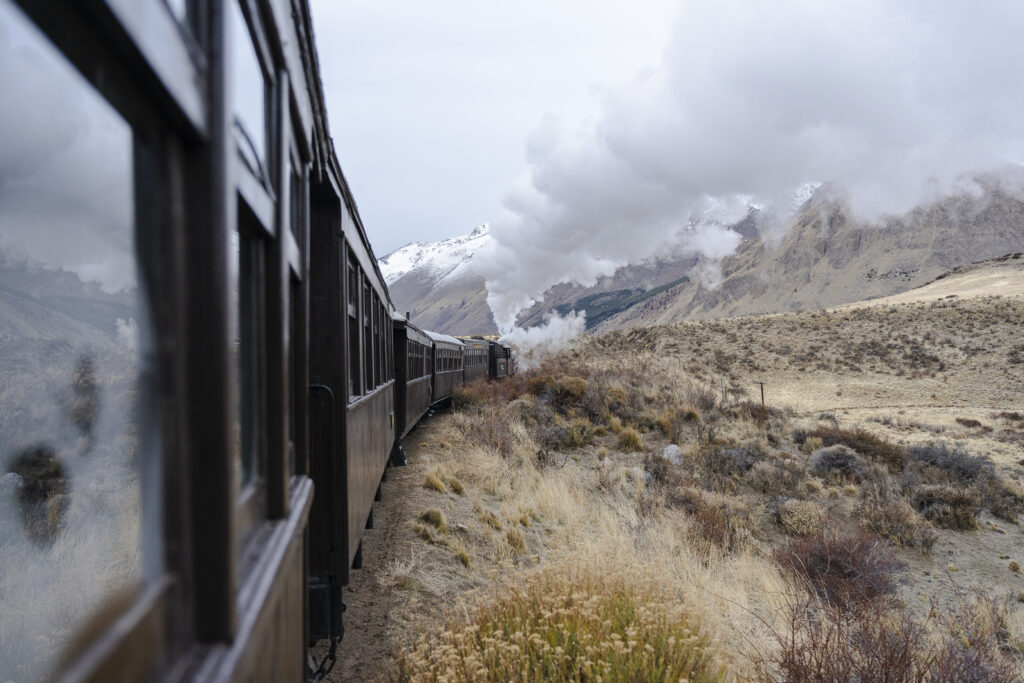
El ferrocarril ha sido un pilar esencial en el tejido de la nación. En el sur, la extensión del ramal que buscaba conectar con Buenos Aires permitió la comunicación entre regiones aisladas, abriendo caminos en un territorio que carecía de otras opciones. Desde sus primeros días, muchos pueblos se entrelazaron con su desarrollo, y a medida que la decadencia llegó en los años noventa, también lo hicieron las dificultades para estos asentamientos. Sin embargo, la sociedad local, incluso frente a decisiones gubernamentales adversas, y con el apoyo de la gestión provincial, se alzó para preservar este baluarte. La Trochita no solo ha atravesado la vasta geografía patagónica, sino que ha dejado una huella imborrable en el corazón de su gente.
Hoy en día, un tren con más de cien años sigue avanzando con altivez y majestuosidad sobre sus vías originales. Cada tablón de los vagones, cada caldera, y cada engranaje de las locomotoras cuentan una historia de amor y dedicación. Los artesanos que mantienen las piezas centenarias originales o crean réplicas exactas están movidos por una herencia que, en algunos casos, pasa de generación en generación. Este profundo sentido de pertenencia y respeto infunde a La Trochita un carácter especial. No se trata solo de viajar en un tren antiguo, sino de experimentar el legado vivo de una tradición que sigue siendo guiada por el respeto y la pasión de quienes lo mantienen en marcha.
MÁS QUE UN MUSEO, UN PORTAL PARA VIVIR LA HISTORIA
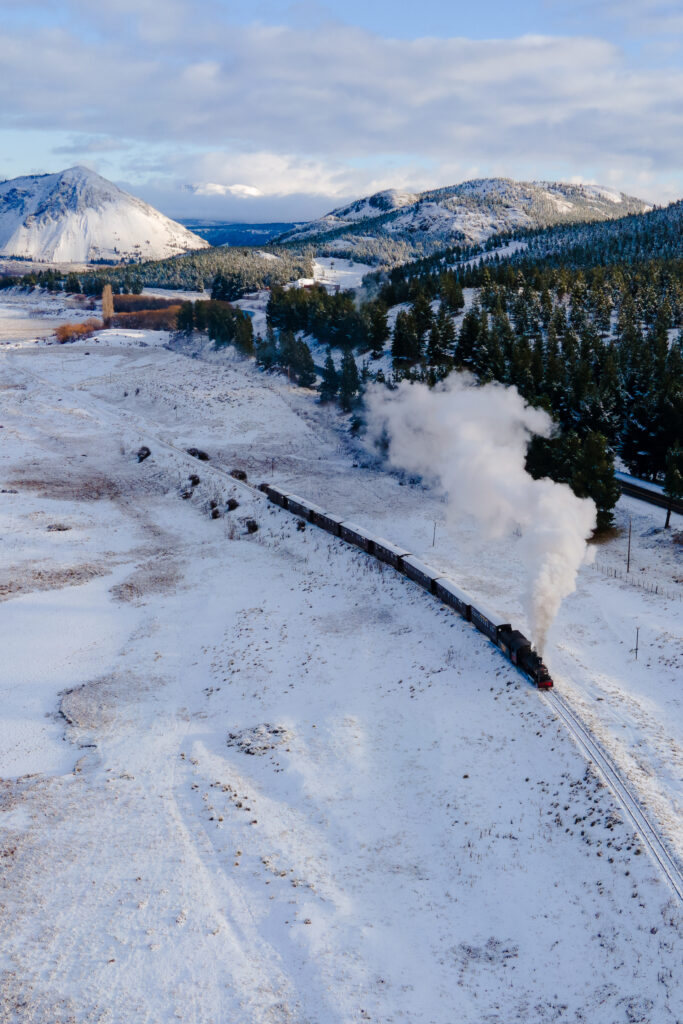
El Viejo Expreso Patagónico es mucho más que un tren; es una puerta abierta a un viaje en el tiempo. Es una invitación a trasladarse a épocas pasadas, a experimentar el trayecto tal como lo hicieron hombres, mujeres y niños en tiempos en los que solo este tren era su medio de desplazamiento. La Trochita encarna un período y una visión que, cargados de la pasión y el esfuerzo necesarios para su construcción y funcionamiento, siguen vivos en cada viaje. Aunque las circunstancias han cambiado, el espíritu que rodea a La Trochita mantiene la esencia de su legado, ofreciendo una experiencia única.
Con salidas programadas en septiembre los días sábados a las 10 de la mañana, durante octubre y noviembre amplía la cantidad de días. La Trochita brinda un recorrido que va más allá de un simple trayecto. Avanzando por los faldeos de los cerros que abrazan la ciudad de Esquel, el viaje se convierte en una inmersión en un pasado envuelto en un etéreo velo romántico, lleno de historias, leyendas y anécdotas que cobran vida en cada curva y cada estampa del paisaje.
English version
La Trochita: A route that awakens the echoes of the 20th century
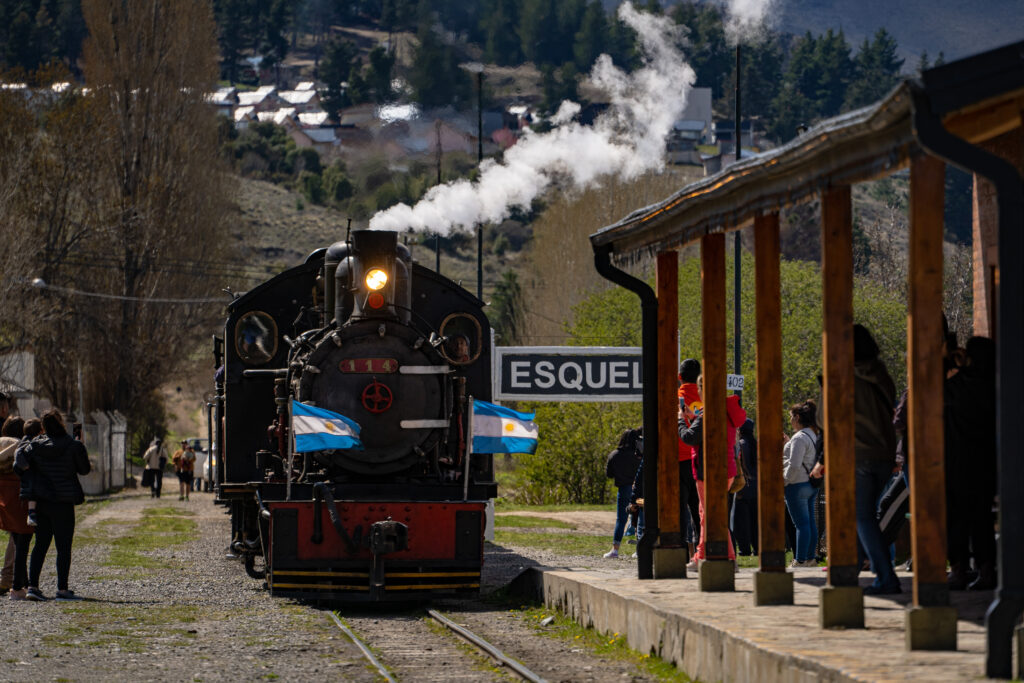
Almost a century ago, since 1945, La Trochita, the Old Patagonian Express, has crossed the vast steppe like an eternal traveler, a living reflection of the identity of southern Argentina. This venerable and beloved train has embroidered with its noble bearing the idyllic landscapes that frame its narrow 75-centimetre gauge, a distinctive feature that has only enhanced its imposing presence and left an indelible mark on the history of the region. This train is not just a relic; He is a storyteller, a chronicler who, with every squeak and snort of steam, relives a time when progress was dressed in iron and steam.
Since 1945, when its iron silhouette appeared for the first time in Esquel, it has woven a bond between nature and man, adorning the Patagonian lands with its iron and majestic presence. In his youth, the long formations of wagons, loaded first with goods and then with passengers’ dreams, strengthened the economy and communication in the region. Today, far from losing its vitality, La Trochita has become a guardian of memories, a tourist attraction that preserves intact the soul of its glory days.
Its original carriages and locomotives from 1922 continue to speak of a time gone by, as silent witnesses of a country project, but also as testimonies of commitment and improvement. Declared a National Historic Monument in 1999, La Trochita is one of the five narrow gauge steam trains that still circulate around the world, carrying with it the echo of a century that refuses to fade.
WHEN HISTORY COMES ALIVE

The Esquel railway station stands as a portal, a threshold that separates the present from the past. Upon crossing the railway promenade, the visitor begins a slow journey through time, where each step takes him or her into a distant era. In the midst of modern technology and comforts, the old lanterns, the furniture of yesteryear, and the journalistic and photographic archives evoke the first years of the last century. Each object is an anchor that roots the visitor in a palpable past, inviting them to be not only a spectator, but an active protagonist of this multisensory journey.
When boarding the century-old wooden carriage, of Belgian origin, you take a seat on the wooden benches that, without luxury, offer authenticity. There are no speakers or digital screens, just the sound of the bells that the guard rings from the platform, signaling the start of the trip. A dense cloud of steam rises from the legendary locomotive, impregnating the air with its essence, while the whistle of the train intertwines with the rhythmic clatter on the rails and sleepers of the narrow gauge, opening the door to an experience full of magic.
The guard approaches to mark the tickets, his presence evoking the ritual of another time. In the center of the car, a salamander continues to do its job, warming the environment in cold times and filling the air with the characteristic aroma of wood when in contact with fire. On one side, the window acts as a bridge between the inside and the outside, a perfect marriage between the depth of nature and the majesty of the train, which moves calmly but firmly towards the Nahuel Pan station.
During the journey, those on board can tour and explore the formation, crossing from car to car through doors that creak with the passage of time. As the train rocks to the rhythm of the narrow gauge, the sounds of the ride intertwine: murmurs in different languages, mixed with the conversations of domestic tourists, create a multicultural mosaic that reflects the diversity of those who come to experience this national monument. Upon arriving at the dining room, the visitor sits at one of the tables while the natural landscape unfolds before their eyes like a parade of paradisiacal postcards. Savor a hot chocolate accompanied by a cinnamon roll, and in one of the more than 40 curves of the route, you can see the locomotive challenging the wind, crossing the cloud of steam, offering an image worthy of a movie that searches on the horizon to find the shadows of bandits Butch Cassidy and the Sundance Kid.
After an hour of departure, the train arrives at its destination: the Nahuel Pan station. The waiting time, about 45 minutes, allows you to prepare the training for the return to Esquel, and provides the opportunity to immerse yourself even more in the railway past, visiting the museum that exhibits the Mapuche-Tehuelche culture before embarking on the return trip.
The current circuit is a condensed version of a route that in its entirety covered more than 400 kilometers, crossing bridges, tunnels and more than 600 curves. It is a living example of the engineering and technology of the last century, where geography was shaped by ingenuity and natural resources were used to the maximum. From the window, when observing the rails, it is impossible not to admire the titanic effort that went into its construction, carried out entirely with pick and shovel. The entire experience is a tribute to the concept of “progress”, an ideal that took shape in various ways and that, in Esquel, can still be “lived” through La Trochita.
THE REFLECTION OF AN IDEAL MADE FEELING IN PATAGONIA
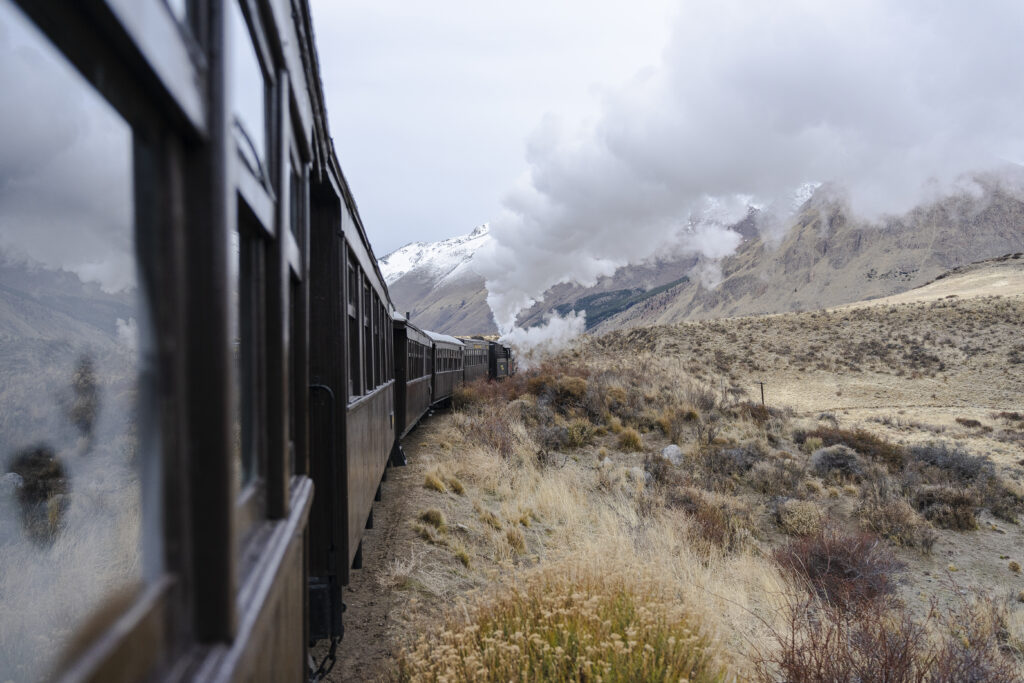
The railroad has been an essential pillar in the fabric of the nation. In the south, the extension of the branch that sought to connect with Buenos Aires allowed communication between isolated regions, opening roads in a territory that lacked other options. From its earliest days, many towns became intertwined with its development, and as decline came in the 1990s, so did hardships for these settlements. However, local society, even in the face of adverse government decisions, and with the support of provincial management, rose up to preserve this bastion. La Trochita has not only crossed the vast Patagonian geography, but has left an indelible mark in the hearts of its people.
Today, a train more than a hundred years old continues to advance with haughtiness and majesty on its original tracks. Each plank of the cars, each boiler, and each gear of the locomotives tell a story of love and dedication. The artisans who maintain the original centuries-old pieces or create exact replicas are driven by a heritage that, in some cases, is passed from generation to generation. This deep sense of belonging and respect infuses La Trochita with a special character. It’s not just about riding a vintage train, but about experiencing the living legacy of a tradition that continues to be guided by the respect and passion of those who keep it going.
MORE THAN A MUSEUM, A PORTAL TO LIVE HISTORY
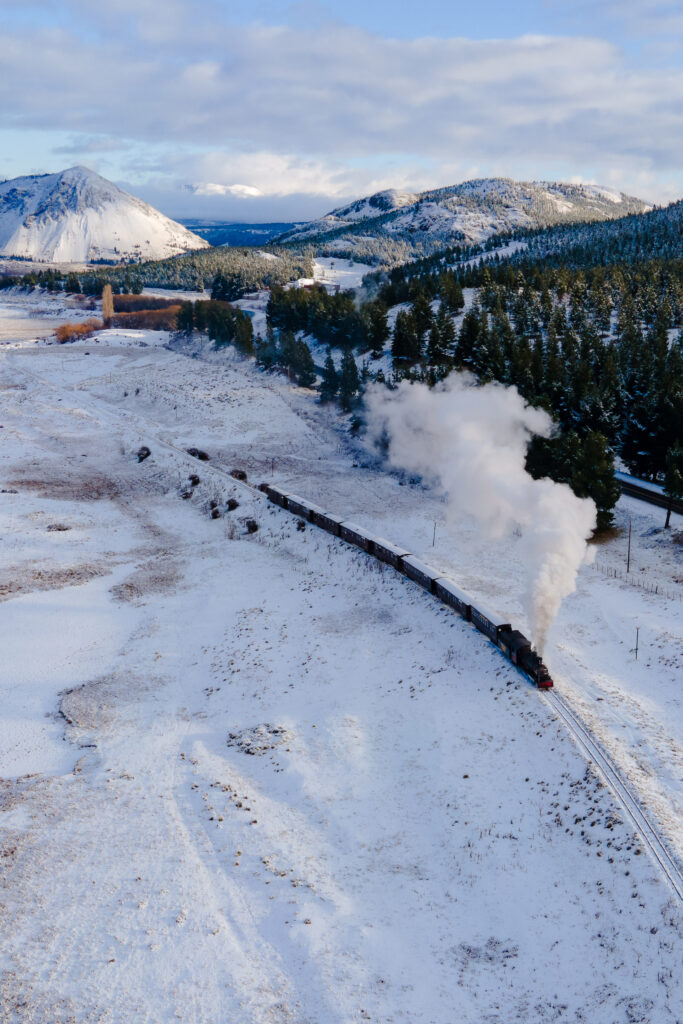
The Old Patagonian Express is much more than a train; It is an open door to time travel. It is an invitation to travel to past times, to experience the journey just as men, women and children did in times when only this train was their means of travel. La Trochita embodies a period and a vision that, loaded with the passion and effort necessary for its construction and operation, remain alive on each trip. Although circumstances have changed, the spirit that surrounds La Trochita maintains the essence of its legacy, offering a unique experience.
With scheduled departures in September on Saturdays at 10 in the morning, during October and November the number of days is extended. La Trochita offers a route that goes beyond a simple journey. Advancing along the slopes of the hills that embrace the city of Esquel, the trip becomes an immersion in a past wrapped in an ethereal romantic veil, full of stories, legends and anecdotes that come to life in every curve and every image of the landscape.
Almost a century ago, since 1945, La Trochita, the Old Patagonian Express, has crossed the vast steppe like an eternal traveler, a living reflection of the identity of southern Argentina. This venerable and beloved train has embroidered with its noble bearing the idyllic landscapes that frame its narrow 75-centimeter gauge, a distinctive feature that has only enhanced its imposing presence and left an indelible mark on the history of the region. This train is not just a relic; He is a storyteller, a chronicler who, with every squeak and snort of steam, relives a time when progress was dressed in iron and steam.

